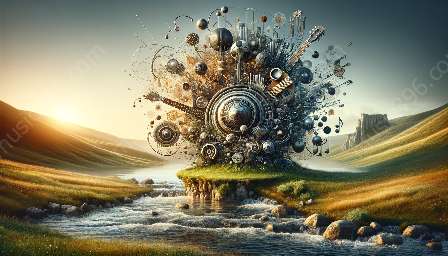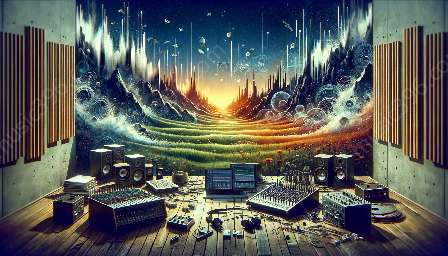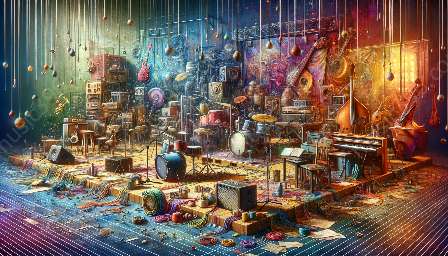Environmental sound plays a significant role in experimental music recording, influencing the creative process and the overall atmosphere of the music. This article delves into the impact of environmental sound on experimental music recording and explores key recording techniques in experimental music, drawing connections to the genres of experimental and industrial music.
Environmental Sound in Experimental Music Recording
Experimental music, known for its unconventional and innovative approach to sound, often incorporates environmental elements to evoke specific emotions and imagery. Environmental sound refers to the ambient noises and acoustics present in a particular setting, such as natural sounds, urban environments, or industrial machinery.
When integrated into the recording process, environmental sound can add depth, texture, and a sense of place to the music, creating immersive sonic landscapes that transport the listener to different auditory realms. It can also serve as a source of inspiration for musicians, shaping the direction and mood of their compositions.
Embracing Serendipity and Unpredictability
One of the defining characteristics of experimental music is its openness to chance and unpredictability. Environmental sound introduces an element of serendipity into the recording process, as the natural or man-made sounds captured can lead to unexpected sonic discoveries and creative breakthroughs. Musicians may choose to embrace these unpredictable elements, allowing them to shape the overall sonic palette of the music.
Enhancing Authenticity and Atmosphere
By incorporating environmental sound into their recordings, experimental musicians can capture the authenticity of a specific location or moment in time, making the music more evocative and immersive for the listener. These sounds can evoke a sense of place, tapping into the emotional and psychological impact of sonic environments on human perception.
Key Recording Techniques in Experimental Music
Experimental music thrives on pushing the boundaries of traditional recording techniques and exploring new sonic possibilities. Here are some key recording techniques commonly employed in experimental music:
- Field Recordings: Musicians capture environmental sounds using portable recording devices, incorporating them into their compositions to add an extra layer of sonic complexity. Field recordings can range from natural elements such as wind and water to urban or industrial noises.
- Granular Synthesis: This technique involves manipulating small sound particles (grains) to create intricate and detailed textures. By processing environmental sound through granular synthesis, musicians can transform everyday sounds into otherworldly sonic landscapes.
- Convolution Reverb: Experimenting with convolution reverb allows musicians to simulate the acoustic characteristics of specific environments or spaces, adding realism and spatial depth to their recordings. This technique can bring the sonic qualities of different environments into the music, blurring the boundaries between the real and the imagined.
- Feedback Loops: By feeding environmental sounds and musical signals back into the recording chain, musicians can create complex and unpredictable feedback loops, generating unique sonic textures and rhythmic patterns.
Connection to Experimental & Industrial Music
Experimental and industrial music genres often intersect with the use of environmental sound and non-traditional recording techniques. Industrial music, in particular, embraces harsh, mechanical, and atmospheric elements that reflect the influence of urban and industrial environments. The integration of environmental sound into experimental and industrial music further blurs the lines between music and sound art, challenging traditional notions of musical composition and performance.
By understanding the impact of environmental sound on experimental music recording and exploring key recording techniques in experimental music, musicians and listeners alike can gain a deeper appreciation for the sonic possibilities that emerge from the fusion of environmental elements and musical creativity.































